Wondering if protein pasta really benefits your health or just tastes good? Exploring its nutritional impact could change how you fuel your body. Let’s uncover what science reveals about this trendy alternative and whether it fits into your healthy eating plan.
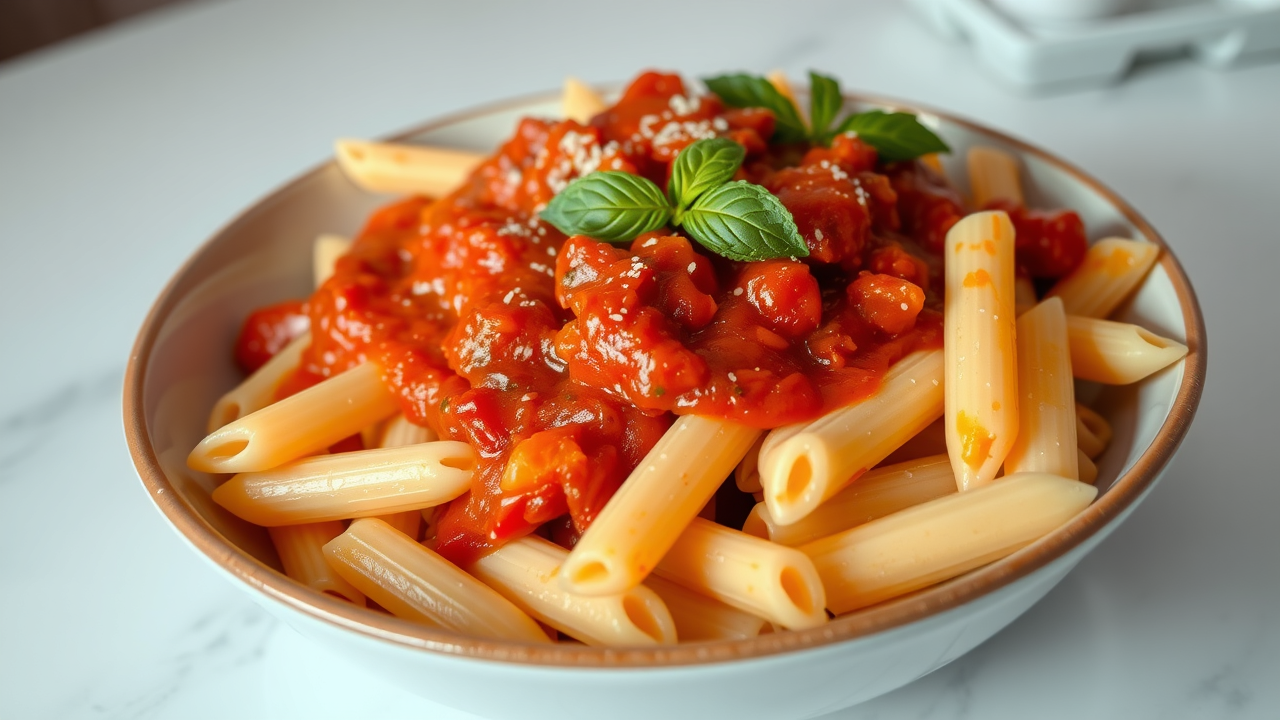
Is Protein Pasta Good for You and Why It Matters
Protein Pasta: A Trend Worth Exploring
In the health and fitness world, protein pasta has generated significant buzz. As more people seek alternatives to traditional pasta, the rise of high protein pasta options like Barilla Protein pasta reflects a growing demand for products that support weight loss, muscle maintenance, and stable blood sugar. But is protein pasta good for you, or is it simply a passing fad? For anyone balancing health goals or looking for a more satisfying pasta dish, understanding its true nutritional value is critical.
With an increasing emphasis on net carbs, grams of fiber, and overall protein intake, exploring alternatives to wheat flour pasta has never been more relevant. This guide breaks down the facts, reviews leading brands, highlights benefits and potential drawbacks, and offers expert-driven advice on incorporating protein pasta into a healthy diet.
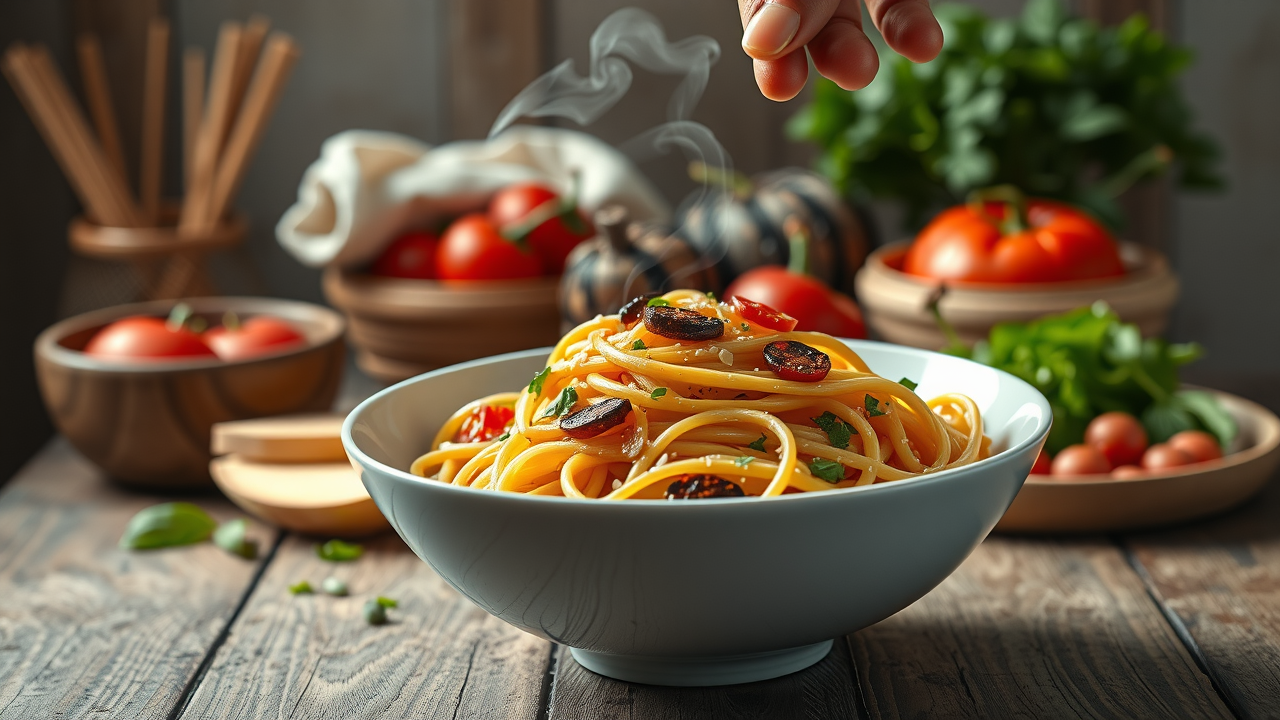
Understanding the Need for High Protein Diets
As scientific research continues to validate the role of protein in a healthy diet, people worldwide are searching for new ways to eat protein and keep their meals delicious and convenient. Higher protein intake is linked to increased muscle retention, improved satiety, and even enhanced weight loss outcomes. Many health-conscious individuals choose protein-rich foods to help them stay full longer and keep blood sugar levels stable.
For those who love a comforting pasta dish, traditional wheat pasta can feel off-limits, especially if you’re watching carbs or seeking more plant-based protein sources. Protein pastas aim to bridge this gap, packing every serving with significantly more grams of protein and fiber compared to their regular counterparts.
If you're interested in expanding your healthy eating options beyond pasta, you might also want to explore other nutrient-dense foods that support fat loss and overall wellness. Incorporating a variety of these foods can further enhance your balanced diet and help you reach your health goals more efficiently.
What Is Protein Pasta?
How Protein Pasta Differs from Traditional Pasta
The difference between protein pasta and regular pasta boils down to ingredients and nutrition. While classic pasta is typically made from durum wheat flour or semolina, protein pasta swaps or supplements these with pea protein, red lentil, chickpea, and sometimes eggs or other protein sources. This alteration gives protein pasta a higher protein content by design — delivering 2–3 times more grams of protein per serving than standard varieties.
Many protein pastas replace some (or all) of the wheat pasta base with plant protein flours, creating an alternative rich in fiber and protein. This results in a product that not only supports different health goals, but also provides lower net carbs, improved fiber content, and longer-lasting satiety—a win-win for anyone hoping to reshape their approach to pasta dishes.
Pea protein: Boosts the protein content and is naturally gluten-free.
Chickpea flour: Offers both protein and a creamy texture.
Red lentil flour: High in plant protein and fiber.
Egg whites: Used in some brands for extra protein per serving.
Whole wheat or high-protein wheat blends: Fortified for a familiar taste and mouthfeel.
Popular Protein Pasta Brands: Barilla Protein and More
Leading the market in protein pasta options are brands such as Barilla Protein, Banza, and Explore Cuisine. Barilla Protein pasta, for example, is crafted with a blend of lentils, chickpeas, and pea protein. Banza uses only chickpeas, while other brands offer combinations of red lentil or black bean for added nutrition and flavor.
These brands cater to anyone craving a high protein and fiber-rich alternative to regular pasta. They offer a range of shapes—rotini, penne, spaghetti—allowing you to enjoy your favorite pasta dish while aligning with your healthy diet or weight loss plan. Smart shoppers also compare net carbs and grams of fiber to find the best fit for their health goals.
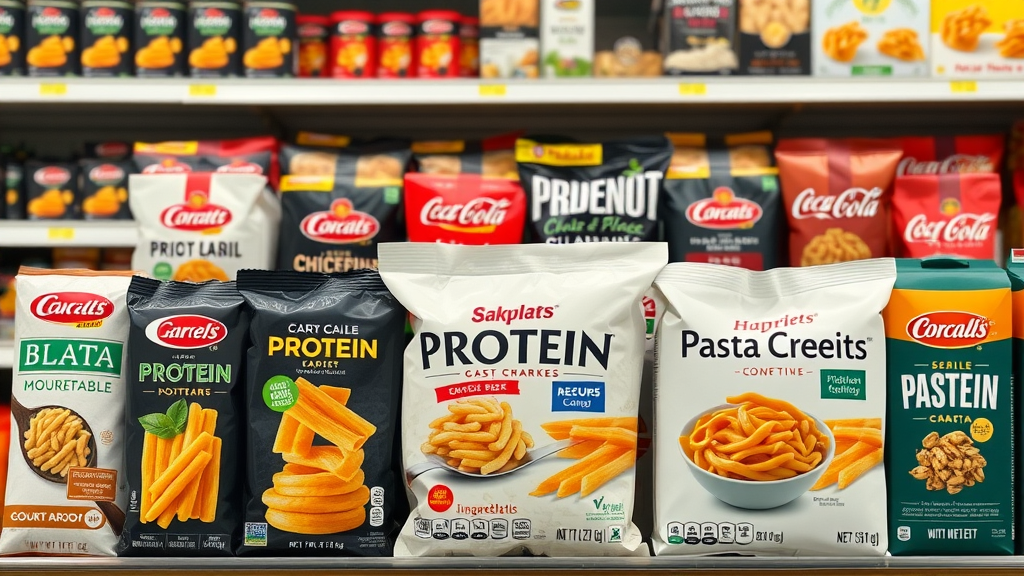
“Protein pastas have redefined the modern pasta dish.” — Registered Dietitian
Nutritional Profile: Is Protein Pasta Good for You?
Comparison of Nutritional Values: Protein Pasta vs. Regular Pasta
Type |
Protein (g) |
Net Carbs (g) |
Fiber (g) |
Calories |
|---|---|---|---|---|
Protein Pasta (Barilla Protein, per 2 oz) |
10–15 |
30–35 |
6–8 |
180–200 |
Regular Pasta (enriched wheat, per 2 oz) |
6–8 |
35–40 |
2–3 |
200–210 |
Macronutrients: High Protein Content
Protein pasta delivers a significant increase in protein content compared to regular pasta. Where a traditional serving of wheat pasta might offer 6–8 grams of protein, a serving of Barilla Protein or Banza clocks in with 10–15 grams or more. This elevated protein content supports muscle preservation and helps you stay full longer—a key to controlling appetite and maintaining weight loss momentum.
The addition of pea protein, chickpeas, and lentils also provides a higher proportion of plant-based protein sources. These ingredients help balance macronutrients and are ideal for active individuals and those pursuing a high protein diet without increasing calorie intake. The unique blend of proteins makes this type of pasta more satisfying as a main pasta dish.
Micronutrients and Fiber Content
Compared to traditional pasta, protein pastas generally include more micronutrients thanks to their plant protein bases—think iron, magnesium, potassium, and B vitamins. A higher fiber content (often 6–8 grams per serving) not only aids digestion but also regulates blood sugar and helps you feel full longer. These nutritional boosts are key reasons health professionals often recommend swapping out regular pasta for higher protein alternatives, particularly if your healthy eating plan focuses on fiber and protein.
The inclusion of legumes (red lentil, chickpea) naturally ups the grams of fiber and broadens the array of essential minerals in your balanced diet. Choosing protein pasta means prioritizing both macronutrient balance and micronutrient density in every pasta dish.
Calories and Carbohydrate Comparison With Other Pasta Dishes
While protein pasta provides a similar or slightly lower calorie count per serving than regular pasta, its net carbs are notably reduced—especially in legume-based options. This matters for people managing carb intake for weight loss or blood sugar control. For example, a serving of red lentil or chickpea pasta can offer 5–10 grams fewer net carbs and more grams of fiber than wheat pasta.
These characteristics make protein pasta ideal for anyone seeking a satisfying pasta dish while still watching total carbohydrate intake. By opting for higher protein and fiber and fewer net carbs, you set yourself up for a more filling meal that supports healthy eating, weight management, and even athletic recovery.
“Protein pastas can be a healthy option, especially for those looking to increase protein intake without relying on meat. They often have more fiber than traditional pasta, but check the ingredient list for additives or highly processed flours that might reduce nutritional benefits.” - Maddie Pasquariello, M.S., R.D.N.
Health Benefits of Protein Pastas
Is Protein Pasta Good for Diet and Weight Loss?
Integrating protein pasta into your regular meal plan can be a powerful move for weight loss or maintenance. Its high protein content helps curb hunger by increasing satiety hormones, keeping you full longer after a meal. This can reduce the urge for excess snacking, aiding calorie control.
Additionally, the lower net carbs and increased fiber support a more balanced metabolic response, lessening blood sugar spikes that can derail weight loss. With protein pastas, you’re not just swapping a carb-heavy dish for a high-protein one; you're supporting your health goals with smarter, more filling options.
Higher protein = increased satiety, fewer cravings.
More fiber = improved gut health and slower digestion.
Lower net carbs = better blood sugar and energy control.
Flexible serving sizes allow you to tailor meals to your calorie and protein needs.
Muscle Building and Recovery: The Role of Protein Pasta
For athletes and active individuals, protein pasta can be an easy way to raise daily protein intake without resorting to shakes or animal-based sources. The combination of grams of protein and complex carbs makes protein pastas well-suited for refueling and muscle recovery post-exercise.
Plant proteins from lentils, chickpeas, and peas provide all nine essential amino acids, supporting not only muscle repair but also long-term dietary variety. For those seeking lean muscle gains, swapping regular pasta for protein pasta as the base of your post-workout meal can be a subtle yet effective change.
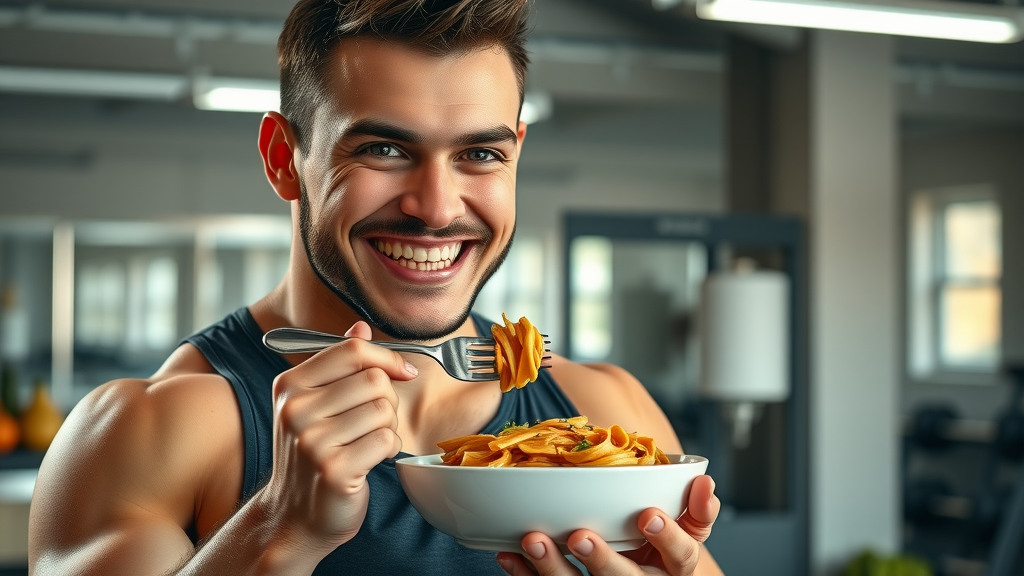
Impact on Blood Sugar and Satiety
Another key benefit of protein pasta is its gentler impact on blood sugar. Thanks to higher fiber and protein content, protein pastas slow carbohydrate absorption, which helps avoid the post-meal energy crashes linked to regular wheat pasta. This is especially beneficial for individuals with insulin sensitivity or those proactively managing their glucose levels.
Feeling full longer is a common experience after a protein pasta meal, thanks to its unique macronutrient balance. With a steadier energy curve and fewer sudden cravings, it’s easier to maintain healthy eating habits and achieve health or fitness goals.
“Switching from traditional pasta to protein pasta may support better blood sugar stability.” — Nutrition Scientist
Types of Protein Pastas: Ingredients and Varieties
Red Lentil, Chickpea, and Bean-Based Protein Pasta
Among protein pasta varieties, red lentil, chickpea, and bean-based options are especially popular for their simple ingredients and robust nutritional profile. Red lentil pasta is naturally gluten-free and offers high amounts of protein and fiber, supporting a healthy gut while providing a rich, earthy flavor. Chickpea pasta is likewise loaded with plant protein, iron, and complex carbohydrates, making it an excellent pick for those who prioritize both taste and nutrition.
Bean-based protein pastas, including those made with black beans or edamame, tend to have similar macronutrient ratios and offer extra micronutrients. These pasta alternatives provide a more diverse protein source than regular pasta, making it easier for vegetarians and vegans to achieve their daily recommended intake.
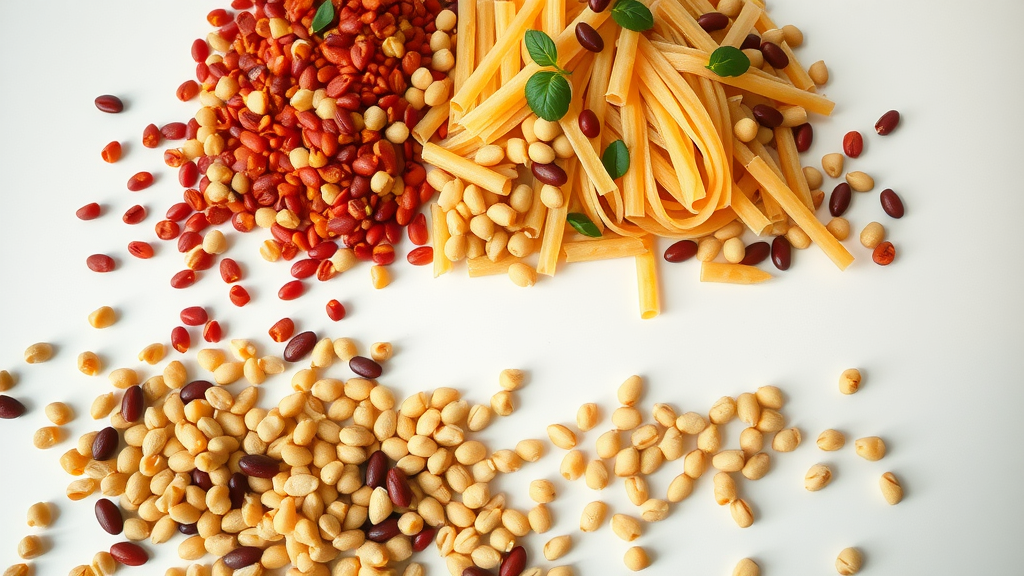
Barilla Protein and Wheat-Based Options
Not all protein pastas abandon grains entirely—options like Barilla Protein pasta feature an enhanced wheat blend. These products combine whole wheat flour, lentils, and pea protein to deliver a familiar traditional pasta texture with significantly more protein and fiber per serving. For pasta lovers who want to keep the classic wheat pasta feel, these fortified options often provide the best balance between taste and nutrition.
Both gluten-free and wheat-based protein pastas give eaters a wide variety:
Gluten-free alternatives for celiac and gluten-sensitive individuals.
High-protein wheat pasta for those who prefer the taste and texture of traditional pasta, but desire enhanced nutrition.
Flavored and specialty options, including spinach, kale, or beetroot additions for extra vitamins.
Potential Drawbacks: Is Protein Pasta Good for Everyone?
Allergens and Sensitivities in Protein Pastas
While the nutritional profile of protein pastas is impressive, not everyone will tolerate them equally well. Some individuals may experience sensitivity or allergies to legumes (such as peas or chickpeas) or to gluten in wheat-based protein pasta. It’s important to review labels for potential allergens, especially if you have a documented allergy or digestive sensitivity.
Plant-based ingredients are generally safe for most people, but you should always start with small servings when introducing a new protein source. Review the ingredient list closely, especially if you are sensitive to soy, eggs, or other common food allergens sometimes used in higher protein blends.
Digestibility and Taste Compared to Traditional Pasta
Some people find that protein pasta can be more filling or sometimes harder to digest than regular pasta, particularly if they’re not used to high-fiber, high-protein foods. A small number of consumers report bloating or mild discomfort after eating bean, lentil, or chickpea-based varieties—usually due to the increased fiber and resistant starch content.
In terms of taste, brands differ: wheat-based protein pastas tend to mimic regular pasta more closely, whereas legume-based alternatives have a distinct earthy flavor. Nevertheless, most fans appreciate the wholesome taste and how well these pastas carry sauces, veggies, or lean proteins.
Mild bloating, especially if increasing fiber too quickly.
Distinct texture or earthy taste compared to white wheat pasta.
Gluten-sensitive eaters must confirm the product is gluten-free.
“While protein pasta offers many benefits, individual tolerance varies.” — Gastroenterologist
How to Eat Protein Pasta for a Balanced Diet
Incorporating Protein Pasta into a Healthy Pasta Dish
The easiest way to add protein pasta to your routine is using it in any pasta dish where you’d typically use regular pasta. Think of classic recipes—spaghetti with marinara, primavera, or pasta salad—updated with a high-protein base. Pair your pasta with plenty of colorful vegetables, lean protein like grilled chicken, fish, or tofu, and a drizzle of healthy fats for a meal that’s both satisfying and nutrient-dense.
For optimal nutrition, balance your serving size (usually 2 ounces dry) with plenty of fiber-rich vegetables and healthy oils. This creates a complete meal that supports energy, fullness, and wellness.
Aim for 2 oz dry/100g cooked as a single portion.
Pair with homemade tomato, pesto, or olive oil sauces for flavor and healthy fats.
Add roasted vegetables or leafy greens for extra vitamins and minerals.
Include a lean protein or plant-based option if your goal is muscle building.
Protein Pasta for Weight Loss: Best Practices
If you’re focused on weight loss, use protein pasta to control calories and increase satiety while enjoying your favorite pasta dishes. Measuring portions accurately and pairing pasta with high-volume, low-calorie sides helps manage calorie intake—and boosts the meal’s overall protein content.
Substitute protein pasta for standard white or wheat pasta in all your recipes. Be mindful of richer sauces and portion sizes to keep your meals aligned with your health goals.
Replace regular pasta with protein pasta at a 1:1 ratio in recipes.
Monitor portion sizes (2 oz dry = 1 serving).
Focus on tomato-based sauces and lean proteins.
Limit high-fat, creamy sauces if you're watching calories.
Track your meals to keep protein and total calories in check.
Comparing Protein Pasta to Other Carbohydrate Sources
Is Protein Pasta Healthier Than Rice?
When examining carb-based staples, protein pasta typically outshines rice for both protein and fiber per serving. While white rice offers mainly starchy carbs with little fiber or protein, protein pasta delivers a better balance of macronutrients, making it a preferred choice for those seeking long-lasting energy and better appetite regulation.
High-protein pasta is especially advantageous for muscle builders, athletes, and anyone focused on weight loss. Compared to brown rice, the nutritional advantage is still present, although brown rice offers more fiber than white. Overall, protein pasta is more filling and nutritionally dense than both white and brown rice, supporting a healthy eating plan.
Nutrition Comparison: Protein Pasta vs. Rice vs. Traditional Pasta (per 2 oz/56g cooked)
Protein Pasta |
Regular Pasta |
White Rice |
Brown Rice |
|
|---|---|---|---|---|
Protein (g) |
10–15 |
6–8 |
3–4 |
4–5 |
Fiber (g) |
6–8 |
2–3 |
0.5 |
2–3 |
Net Carbs (g) |
30–35 |
35–40 |
35–40 |
32–37 |
Calories |
180–200 |
200–210 |
200–220 |
200–215 |
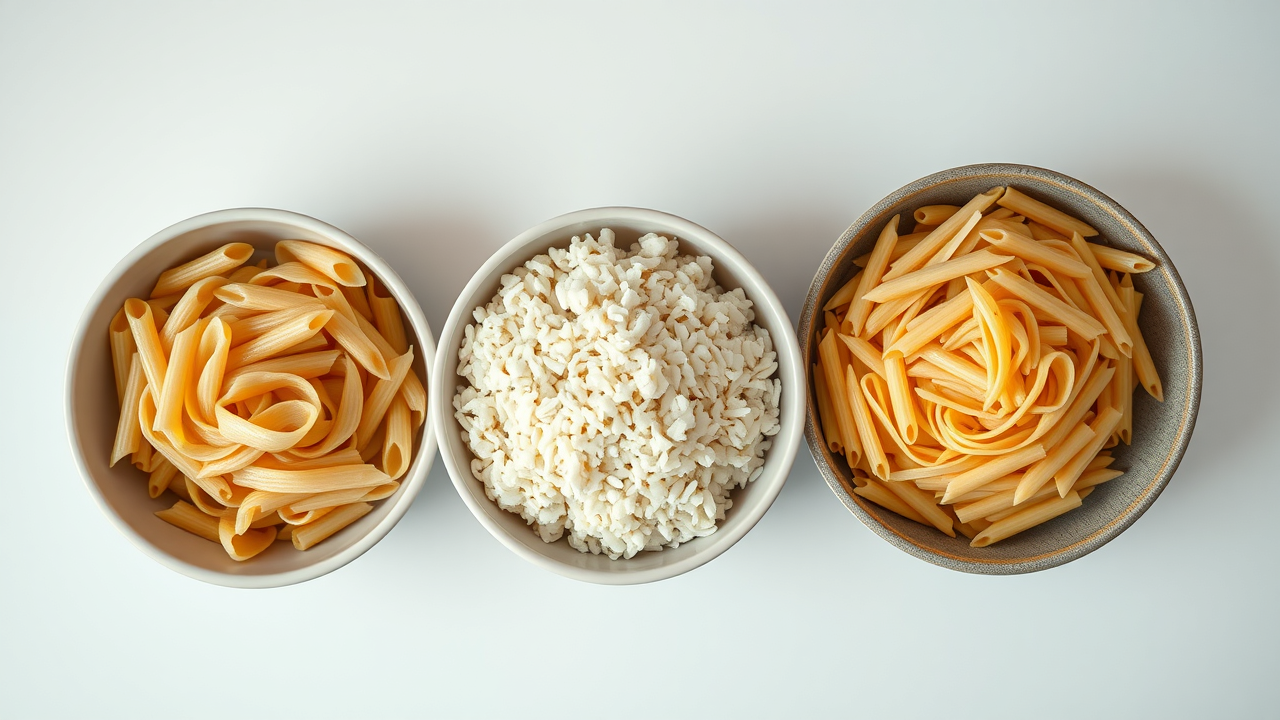
Choosing the Healthiest Pasta to Eat Based on Science
Scientific research supports the idea that protein pasta—especially those rich in plant proteins and fiber—may offer the healthiest nutritional profile for most adults. These pastas outperform regular wheat pasta and rice in almost all major nutritional categories, particularly for protein content, fiber levels, and sustained satiety. If you’re aiming for improved weight management, muscle recovery, or lower cholesterol, protein pasta is a science-backed winner.
Ultimately, the healthiest pasta is one that fits your dietary needs and eating preferences, but most evidence points to protein-rich, legume-based options as the most nutrient-dense and beneficial for long-term health.
Expert Opinions: Is Protein Pasta Good for You According to Science
“Science supports protein pasta as a viable nutrient-dense alternative for most healthy adults.” — Dietitian
Experts highlight lower glycemic impact compared to regular pasta and rice.
Protein pastas contribute to higher protein intake for muscle retention and weight loss.
Research supports improved satiety and better blood sugar management with protein-rich pasta dishes.
Best suited for active adults, those seeking weight loss, and anyone reducing refined carbs.
People Also Ask: Common Questions About Protein Pasta
Is protein pasta good for diet?
Yes. Because protein pasta is higher in protein and fiber and lower in net carbs than regular pasta, it can help support your dietary goals, aid in weight management, and promote satiety.
Is Barilla protein pasta healthy for weight loss?
Barilla Protein pasta is a healthy choice for weight loss because it provides more protein and fiber per serving, helping to keep you full longer and naturally limiting calorie intake.
What is the healthiest pasta to eat?
Nutritional science favors protein pastas made from legumes (like red lentil or chickpea) or whole grains. These offer the best combination of protein, fiber, and essential vitamins, making them the top choice for most health-focused eaters.
Is protein pasta healthier than rice?
Generally, yes. Protein pasta provides more protein and fiber, leading to greater satiety and better blood sugar balance compared to rice.
People Also Ask
Is protein pasta good for diet? Protein pasta supports healthy eating and weight loss by being higher in protein and fiber, which helps you feel full longer and can curb calorie intake.
Is Barilla protein pasta healthy for weight loss? Yes, its extra protein and fiber help manage hunger and stabilize energy levels, making it a sound option for those trying to lose weight.
What is the healthiest pasta to eat? Legume-based and high-protein pastas deliver the best nutrition for most people, balancing macronutrients and providing strong fiber and protein sources.
Is protein pasta healthier than rice? In most cases, yes, due to superior protein and fiber content and lower impact on blood sugar.
-

FAQs: All About Protein Pasta
Is protein pasta gluten-free? Many legume-based choices are, but wheat-based options are not. Check labels for allergens and gluten content.
Can I eat protein pasta every day? Yes, for most healthy adults; moderation and variety still ensure a balanced diet.
Does protein pasta taste like regular pasta? Some brands closely mimic traditional pasta, while others have an earthier flavor—try different varieties to find your preference.
Does protein pasta raise blood sugar? Less than regular pasta, due to enhanced protein and fiber content; still, portion control is important.
Can protein pasta support muscle building? Yes, it contributes extra grams of protein per serving to fuel and repair muscles after exercise.
Key Takeaways: Is Protein Pasta Good for You?
Protein pasta offers superior protein and fiber compared to regular pasta or rice.
It can **assist weight loss, appetite control, and muscle recovery**.
Legume-based and wheat protein pastas provide diverse options for all diets.
Potential sensitivities exist; always check ingredient lists for allergens.
Expert consensus and research support protein pasta as a healthy, science-backed choice for most adults.
Conclusion: Should You Eat Protein Pasta?

Final Thoughts on Including Protein Pasta in a Healthy Diet
For most people, protein pasta is a delicious, filling, and scientifically supported alternative that fits easily into a healthy eating plan. If you aim for a more satisfying, nutritionally complete pasta dish, it’s time to make the swap.
As you continue to refine your approach to nutrition, consider how your overall food choices can amplify your results. Exploring strategies that target fat loss while you sleep—such as adding specific superfoods to your evening routine—can further accelerate your progress.
For a deeper dive into optimizing your diet and discovering foods that work synergistically with your health goals, check out these top superfoods that help melt visceral fat overnight. Embracing a holistic perspective on nutrition empowers you to make smarter, more sustainable choices for lifelong wellness.
Protein pasta has gained popularity as a nutritious alternative to traditional pasta, offering higher protein and fiber content. For instance, Banza’s chickpea-based pasta provides 50% more protein and three times more fiber than regular pasta. (time.com) Similarly, Barilla’s red lentil rotini offers 14 grams of protein per 2-ounce serving. (prevention.com)
These options not only support muscle maintenance and satiety but also cater to various dietary preferences, including gluten-free and plant-based diets. If you’re looking to enhance your meals with nutritious pasta alternatives, exploring these brands can be a great start.
 Add Row
Add Row  Add
Add 




Write A Comment